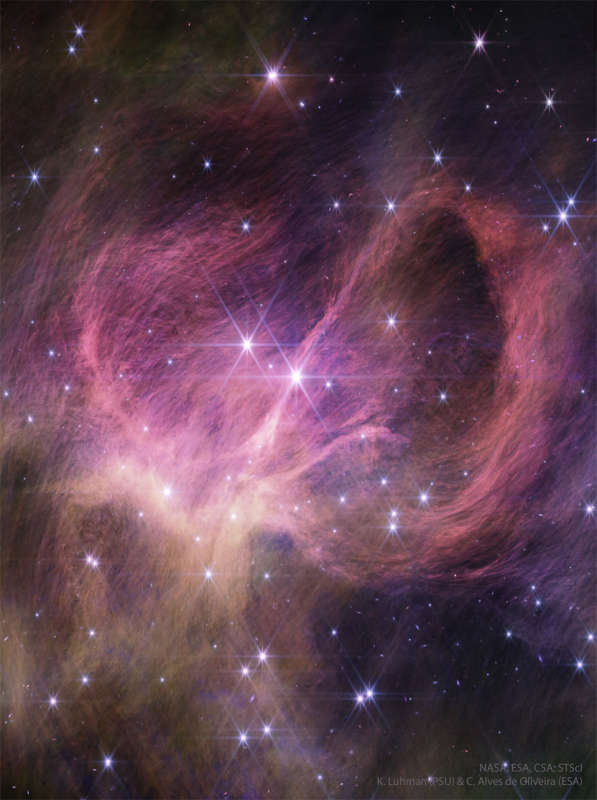
|
Credit & Copyright: NASA,
ESA,
CSA,
STScI, and
K. Luhman
(Penn State U.) and
C. Alves de Oliveira
(ESA)
Explanation:
Sometimes, it's the stars that are the hardest to see that are the most interesting.
IC 348
is a young star cluster that illuminates surrounding filamentary dust.
The stringy and winding dust appears pink in
this recently released infrared image from the
Webb Space Telescope.
In visible light, this dust reflects mostly blue light, giving
the surrounding material the familiar blue hue of a reflection
nebula.
Besides bright stars, several cool objects have been located in IC 348, visible because
they glow brighter in
infrared light.
These objects are hypothesized to be low mass
brown dwarfs.
Evidence for this includes the detection of an
unidentified
atmospheric chemical, likely a hydrocarbon, seen previously in the
atmosphere of
Saturn.
These objects appear to have masses slightly greater than known planets,
only a few times greater than
Jupiter.
Together, these indicate that this young
star cluster contains something noteworthy -- young planet-mass
brown dwarfs that float free, not orbiting any other star.
|
January February March April May June July August September October November December |
| ||||||||||||||||||||||||||||||||||||||||||||||||
NASA Web Site Statements, Warnings, and Disclaimers
NASA Official: Jay Norris. Specific rights apply.
A service of: LHEA at NASA / GSFC
& Michigan Tech. U.
Based on Astronomy Picture
Of the Day
Publications with keywords: star cluster
Publications with words: star cluster
See also:
